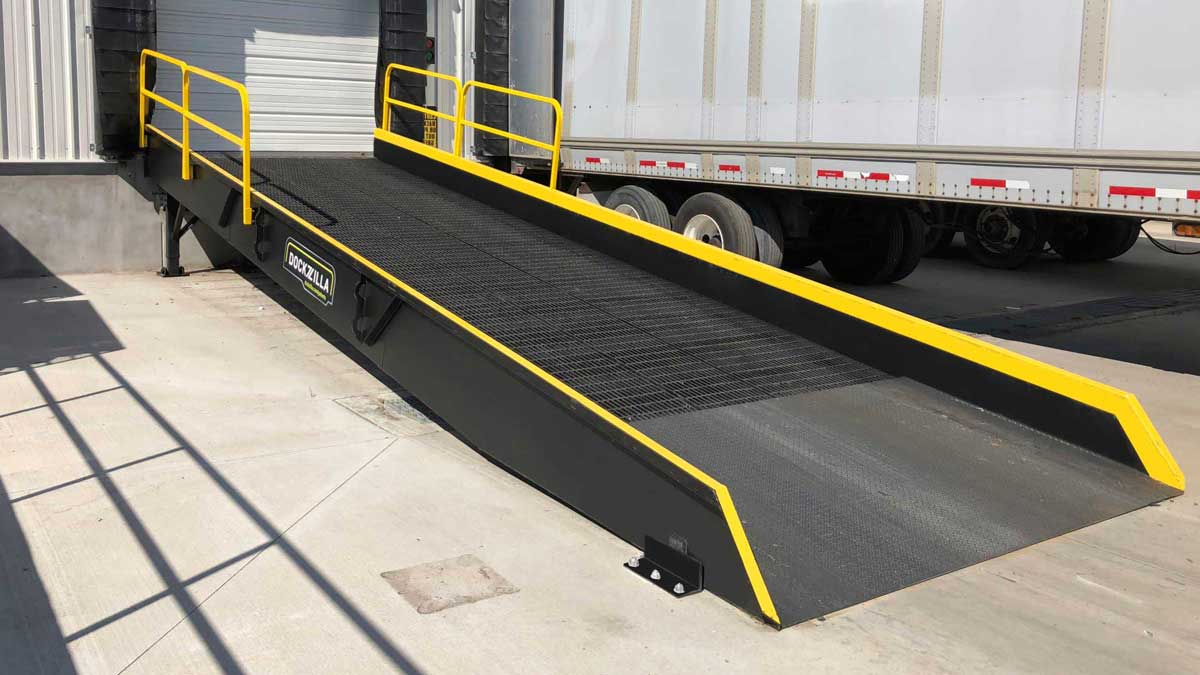
When shipping/receiving challenges pose a threat to the bottom line, the costs and downtime associated with new loading dock construction can send businesses into the fetal position. To lighten this load, it’s important to remember that not all loading dock designs are set in stone. In fact, the decisions you make now to improve loading operations can have major implications in the future, when your lease ends or you move to another facility.
One of the biggest decisions you’ll need to make is what type of material to use. We’re all familiar with concrete loading docks, a permanent dock design which is the most ubiquitous style on the market. However; heavy-steel loading docks are delivering a more flexible solution that combines the integrity and DNA of a concrete loading dock into a portable loading unit that can be relocated to other facilities.
While there’s the obvious savings of more than $25,000-$50,000 by avoiding concrete installation, heavy-steel loading docks from Dockzilla offer significant return on investment over the course of the long haul. Here’s how to reap a truckload of savings:
Downtime – Several months may be required to secure a site plan, zoning assessments, and construction permits for the installation of permanent docks. Heavy-steel portable docks report for duty within 6-8 weeks.
Environmental Concerns – When installing a permanent loading dock, environmental factors can deter construction, such as requirements for disposal of hazardous materials, nearby wetlands, or storm sewers needed. Available in a variety of stationary and mobile models, heavy-steel loading docks can accommodate any of these issues.
Contractors and Architects – A concrete loading dock will likely require input from architects, contracts, and city engineers that can rack up professional fees. Dockzilla engineers offer complimentary consultation and design services to deliver the portable loading dock option that’s best for your business.
Depreciation – One of the most overlooked ways to save on loading docks is depreciation. Permanent loading docks are considered a “building improvement” expense and depreciate over the course of 30-50 years; while portable loading docks are an “equipment expense,” which depreciates in just 7-10 years. Work with your finance or purchasing department to determine the scenario that would work best over time.
Reclamation – Many facility leases have a reclamation clause, which may require tenants to return the building to its original condition when the lease ends. If a business built a concrete loading dock, they would need to invest in costly demolition and site clean up. Heavy-steel loading docks are portable, which means they can be easily relocated to another facility, or sold to an incoming tenant, eliminating unnecessary reclamation costs.

